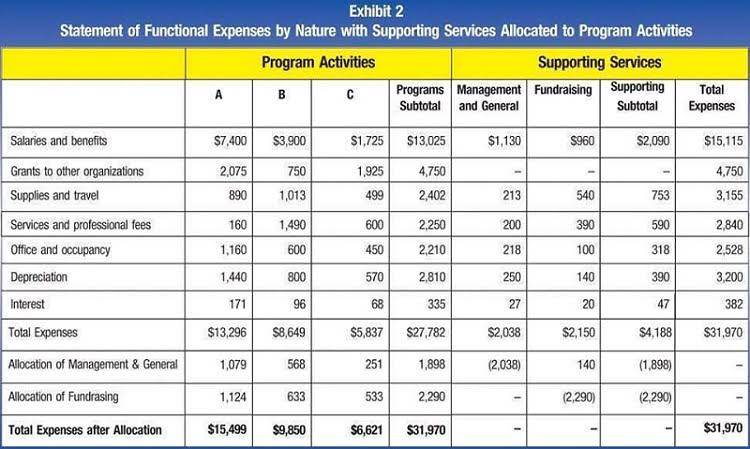
The use of a depreciation tax shield is most suitable in asset concentrated businesses. In this article, we will try to guide with the finest information and proper use along with its calculations. We note that when depreciation expense is considered, EBT is negative, and therefore taxes paid by the company over the period of 4 years is Zero.
Impact of Depreciation Methods
This $10,500 represents the reduction in the company’s tax payment for that period due to the depreciation deduction. The higher the depreciation expense or the corporate tax rate, balance sheet the greater the tax shield. Different methods exist for calculating depreciation, which influence the timing of the tax shield.

BAR CPA Practice Questions: Calculating Research and Development Costs
An individual may deduct any amount attributed to medical or dental expenses that exceeds 7.5% of adjusted gross income by filing Schedule A. The intuition here is that the company has an $800,000 reduction in taxable income since the interest expense is deductible. The use of a depreciation tax shield is most applicable in asset-intensive industries, where there are large amounts of fixed assets that can be depreciated. Conversely, a services business may have few (if any) fixed assets, and so will not have a material amount of depreciation to employ as a tax shield. It is necessary to understand the importance of the concept of depreciation tax shield equation in the corporate environment as a temporary benefit to save taxes.
Examples of Depreciation Tax Shields

A taxpayer can submit the appreciation of taxable income up to later years by using accelerated reduction. Discover how strategic asset expensing can reduce a company’s tax liability, enhancing available capital for Financial Forecasting For Startups growth and operations. The ability to use a home mortgage as a tax shield is a major benefit for many middle-class people whose homes are major components of their net worth.
However, each year, a portion of that asset’s cost is recognized as an expense on the income statement, reducing reported profit. A common method for calculating this expense is straight-line depreciation, which allocates an equal amount of the asset’s cost, minus any salvage value, to each year of its useful life. While tax shields result in tax savings, the two concepts are not exactly the same. Tax shields reduce taxable income, which leads to a lower overall tax liability, effectively saving the taxpayer money. The lower the taxable income, the lower the tax owed, which is how tax shields translate into tax savings. The accelerated the depreciation tax shield is best defined as the: depreciation method provides a larger tax shield in the initial years, helping the company reduce taxable income significantly during the early stages of the truck’s use.

Understanding The Tax Shield Approach
- Depreciation spreads the asset’s cost over the years it contributes to revenue, rather than expensing the entire cost in the year of purchase.
- Below, we take a look at an example of how a change in the Depreciation method can have an impact on Cash Flow (and thus Valuation).
- The Depreciation Tax Shield is calculated by multiplying the depreciation expense by the tax rate.
- They also make capital-intensive investments more attractive because the higher the investment in depreciable assets, the greater the potential tax shield.
- It is easy to note the difference in the tax amount payable by the business at the end of each year with and without the annual depreciation tax shield.
- The concept of annual depreciation tax shield is identified as an important factor during financial decision-making by the management in case the business is highly capital-intensive.
Therefore, depreciation is perceived as having a positive impact on the free cash flows (FCFs) of a company, which should theoretically increase its valuation. D&A is embedded within a company’s cost of goods sold (COGS) and operating expenses, so the recommended source to find the total value is the cash flow statement (CFS). Since Depreciation Tax Shield reduces the amount of tax a company needs to pay, it improves the company’s cash flow.
Those tax savings represent the “depreciation tax shield”, which reduces the tax owed by a company for book purposes. A tax shield on reduction is the correct organization of assets for saving the tax. Consequently, this is a tax lowering technique under which devaluation expenses can deduct from taxable income. Taxpayers who have paid more in medical expenses than covered by the standard deduction can choose to itemize in order to gain a larger tax shield.
Related AccountingTools Course

A depreciation tax shield is a tax evaded causing by the deduction of depreciation in assets. We can analyze the taxable income with the assistance of multiplication of tax rate with reduction expense. The depreciation tax shield helps the company to maintain all the depreciation of the assets.

The real cash outflow stemming from capital expenditures has already occurred, however in U.S. The Depreciation Tax Shield refers to the tax savings caused from recording depreciation expense. The tax shield might not apply in certain government agencies where reduction is not allowed as a tax deduction. When an industry uses an accelerated depreciation technique, it simply lowers the rate of its entire assets. This will become the main source of cash inflow which we saved by not providing tax.
